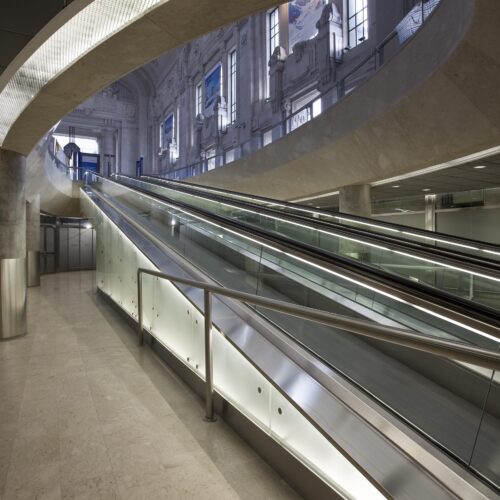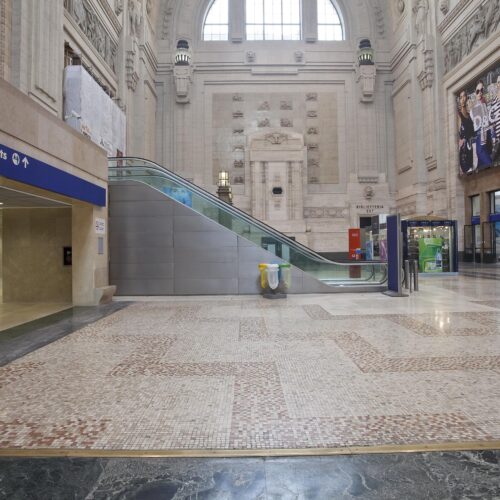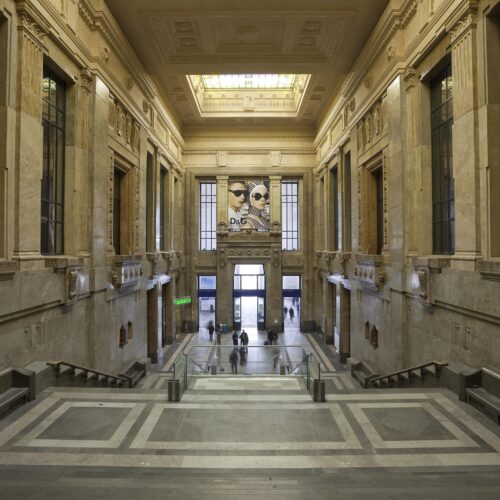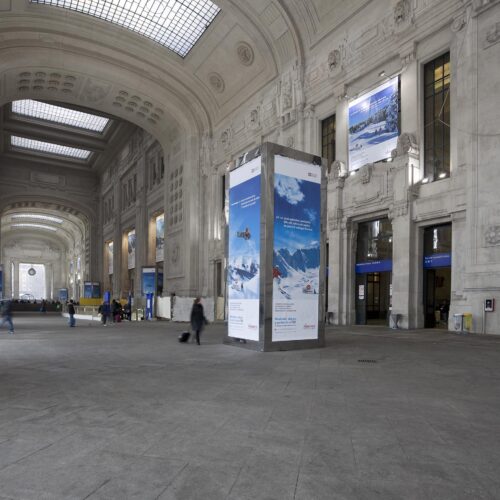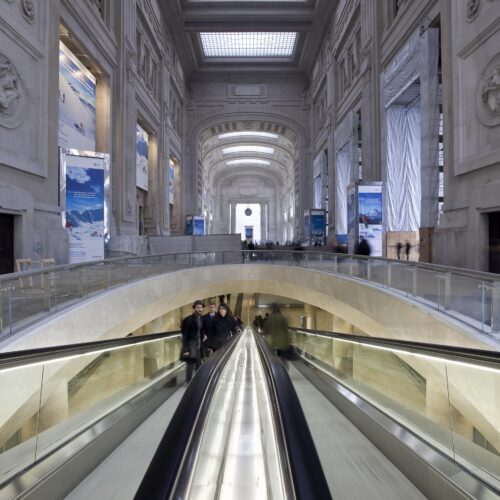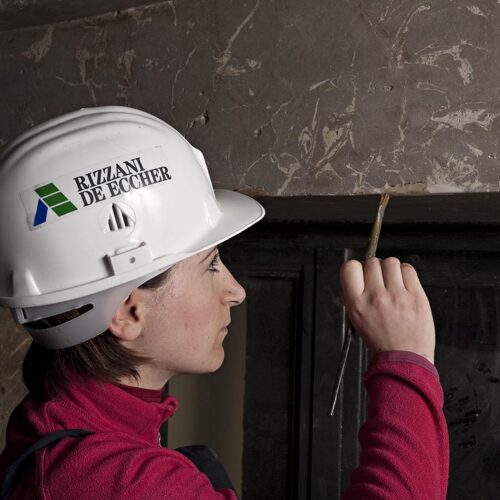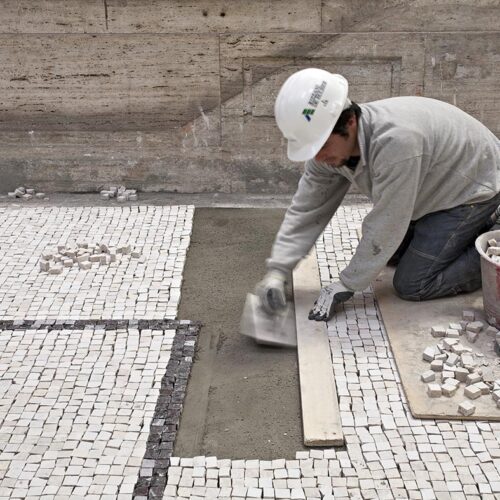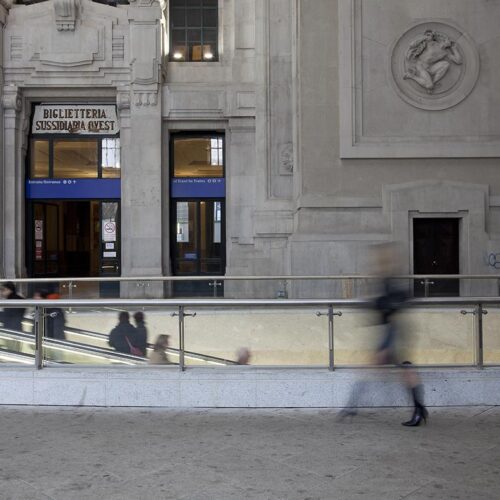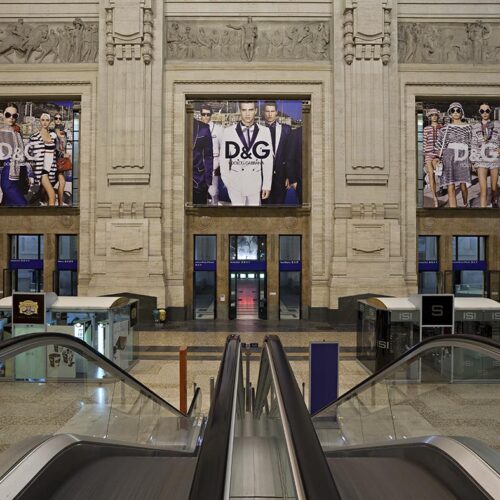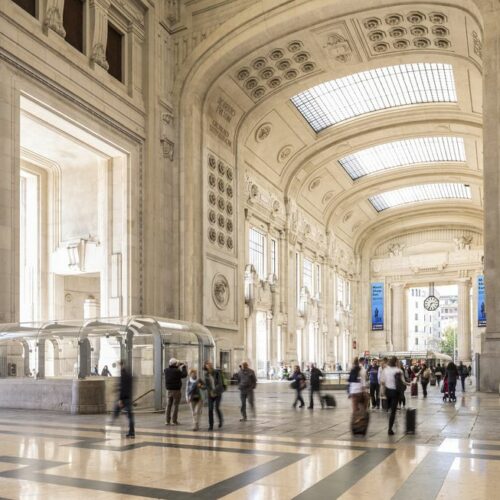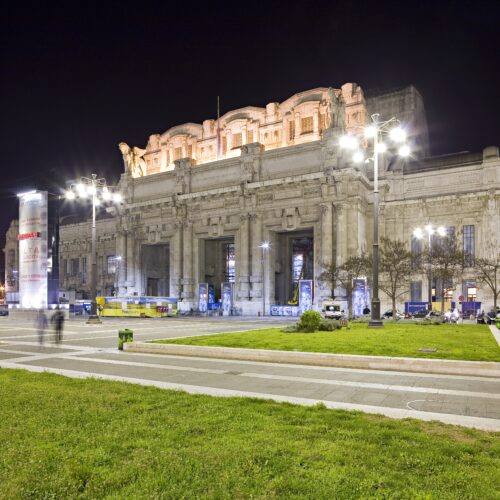Fondaco Dei Tedeschi
Restoration of Milan Grand Central Station
Major restoration and redevelopment works of one of the main railway stations of Europe
- Milan, Italy
- Institutional & Public Buildings
- Completed: 2011
€120M
Total investment100,000
mqHighlights
- Total restored area 100,000 sqm;
- Restored pavements and mosaics 6,700 sqm;
- 120 million passenger per year.
Description
The restoration and requalification of Milan Grand Central Station (originally built in 1930) is based on the modern and functional reconversion of non-monumental areas, earlier been used as storage rooms and tunnels, as well as the restoration of monumental areas through the elimination of dirt, stains and material decay and the reconstruction of the original decorations, paving, and stone cladding.
Milano Centrale is Italy’s second largest station, connected with two metro lines and the nearby railway link. Located in the very center of the city, it is used by over 350.000 people per day and around 120 million per year. The chief station services were completely re-configurated to keep up with present-day needs and expectations of modern users and visitors. In addition, a program of action measures was carried out in order to re-establish a high standard of environmental quality, comfort, and security throughout the station premises.
Advanced technologies were also implemented with full respect to the historical and architectural identity of the station building. The project included three particularly significant measures:
- elimination of vehicle traffic from the carriages gallery where the existing situation was functionally chaotic and below acceptable environmental quality level;
- elimination of the service equipment and commercial cubicles that have accumulated through the years, cluttering the station’s monumental spaces;
- realization of a functional center of integrated services and shops open to all, passengers and the public alike.
As the works took place while the station was fully open, in order to cause minimum disruption ultra-light aluminum scaffolding, suspended on steel cables and sliding on special tracks laid on trellis columns parallel to the retaining walls, was used.
Companies involved
